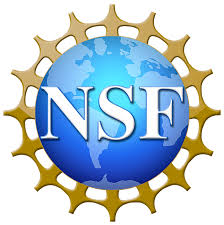


|
Division of Agricultural Sciences and Natural Resources, Oklahoma State University | Medicago truncatula Mutant Database | ||||
| Medicago truncatula Mutant Database |

|
||||
Division of Agricultural Sciences and Natural Resources, Oklahoma State University is in charge of maintaining and distributing Medicago truncatula Tnt1 mutant lines. These lines are now available to the scientific community for research purposes.
To assist with line maintenance and seed propagation, $100 USD will be charged for each ordered line. In addition, for each order/shipment, $100 USD for international orders and $20 USD for domestic orders (via UPS) will be charged for shipping and handling.
Seeds of the mutant lines can be ordered online. Registration is required to complete the ordering procedure. You MUST sign in before placing mutant orders.
Once your request form is received, we will send you a Materials Transfer Agreement (MTA) to be signed by your institution as well as an invoice for payment. As soon as we receive payment and an executed MTA, we will send you 10-12 R0 or 15-20 R1 seeds for each requested line.
R0 seeds are seeds from original regenerated plants after self-pollination (segregation is expected for all inserts). R1 seeds are bulked seeds from multiple R1 plants (generated after self-pollination of plants germinated from R0 seeds). Both R0 and R1 seeds will generate segregating progenies.
Please note that seeds are available for most but not all Tnt1 lines. Some lines did not produce seeds or seeds are not available in sufficient quantity to enable distribution at this time. In the latter case, seed will be amplified before filling orders, which will take several months.
If you have any questions, please contact Dr. Jiangqi Wen by email (jiangqi.wen@okstate.edu) or phone (+1-580-224-0625 or 580-319-6347).
Every reasonable effort will be made to provide you with seeds from the lines you request; however, inadvertent errors in cataloging or handling of seeds or DNA samples may occur. It is advisable that you confirm the Tnt1 insertion in your gene of interest before starting your research. The terms and conditions concerning the transfer and your use of the Medicago truncatula Tnt1 mutant lines, including limitations of liability, will be governed by the MTA.

Starting from 2013, we have been employing the Illumina MiSeq platform to sequence the pooled and indexed TAIL-PCR products of Tnt1 lines. Using a 2-dimensional pooling strategy, we are able to sequence 400 Tnt1 lines in one run. After sequencing, reads are cleaned, sorted, and assembled into contigs. Each contig, which contains multiple reads with one specific X-pool barcode and one specific Y-pool barcode, is assigned as an FST to a specific Tnt1 line according to the pooling tables. The FSTs from contigs with only one X-pool barcode and one specific Y-pool barcode are defined as high-confidence FSTs. All FSTs that were sequenced using traditional Sanger sequencing method (prior to using the Illumina Miseq) are also defined as high-confidence FSTs. Sometimes one contig may contain more than one X-pool barcode or Y-pool barcode. In this case, the contig is assigned to a specific Tnt1 line based on barcodes of most majority reads. These FSTs are defined as a low-confidence FSTs. So low-confidence FSTs are not necessarily wrong FSTs but the risk exists. We suggest when you perform BLAST search for Tnt1 insertions in your genes-of-interest, select the High-confidence FSTs database first. If no positive true hits are found, you can then select the Low-confidence FSTs database.
Most FSTs that were sequenced by Sanger method are amplified using the Tnt1 forward primer and begin with a Tnt1 signature sequence: CCCAACA. These FSTs are labeled with the line ID followed by Insertion ID, for example, NF1320-Insertion-2. Some FSTs from Sanger sequencing method are amplified using the Tnt1 reverse primer and begin with a Tnt1 signature sequence: CATCATCA. These FSTs are similarly labeled as those with the Tnt1 forward primer but indicated with an R, for example, NF1320R-Insertion-2.
All FSTs from the Illumina Miseq platform are amplified using the Tnt1 reverse primer. They are labeled with the line ID followed by High ID or Low ID, for example, NF9667-High-1 or NF9667-Low-1. Some of these FSTs have a Tnt1 signature sequence at either 5' end (GGACATCATCA) or 3' end (TGATGATGTCC), while some of them don't have a Tnt1 signature sequence because they are sequenced from the degenerate primer end and do not overlap with the sequences from the Tnt1 primer end. When you genotype your segregating progenies, please use all primer combinations.
Try to use the R108 genomic sequences of your genes-of-interest for BLAST search. If you have difficulties in getting the R108 sequences, please contact Dr. Jiangqi Wen at jiangqi.wen@okstate.edu.
The high throughput next generation sequencing approach provides powerful sequencing capacity so that we can sequence all Tnt1 lines in short time. Meanwhile, because we handle large amounts of sample pools and PCR reactions and assemble millions of reads, inadvertent errors may occur in pooling and/or FST assignments. It is possible that even a high-confidence FST may be inaccurately assigned to a specific line if there is an error in sample pooling or there are limited reads in the contig.